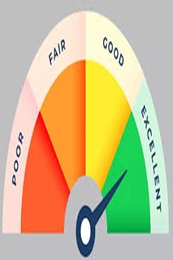Savings Account vs Checking Account: Which One Should You Choose?
April 15, 2025

When it comes to banking, two popular choices are Savings Accounts and Checking Accounts. Savings Accounts are bank accounts that allow you to park your money in a safe and secure way. Whereas, a Checking Account, also known as Current Account also allows cash deposits and withdrawals. However, unlike Savings Accounts, the account balance doesn't earn any interest. Checking Accounts are generally used by businesses to facilitate day-to-day business transactions.
In this blog we have highlighted the key differences between Savings Accounts and Checking Accounts so that you make an informed decision.
What is a Savings Account?
A Savings Account allows individuals to save and grow their money in a safe and secure way. The account balance keeps earning interest letting your money grow. Generally, the interest is calculated on end-of-the-day balance. Savings Accounts come with Debit Cards, which you can use to withdraw cash from ATMs. However, free cash withdrawals at ATMs are allowed to a certain limit, generally 5 transactions per month.
Post 5 ATM withdrawals, you have to pay a certain fee on every transaction made in that particular month. That said, there are Debit Cards that offer unlimited ATM cash withdrawals. Debit Cards also offer additional benefits like cashback and rewards, health insurance cover, complimentary lounge access, etc. You can avail services like NEFT, RTGS and IMPS services facilitating quick and seamless fund transfers. Also, when you open a Savings Account, banks generally provide a passbook and chequebook.
If you open a Digital Savings Account or an Online Savings Account, your passbook and chequebook would be directly delivered to your registered home address. A few other services you can avail with a Savings Account include mobile banking, WhatsApp banking, net banking, phone banking, etc.
What is a Checking Account?
A Checking Account operates along the lines of a Current Account, meaning the account balance doesn't earn any interest. However, unlike Savings Accounts, there're no restrictions on withdrawals. You can use a Checking Account to pay bills, carry out online transactions, and more. The bank provides a passbook, chequebook and a Debit Card at the time of account opening.
Savings Account vs Checking Account: Factors to Consider
1. Purpose and Usage
Both savings accounts and checking accounts serve different purposes. A savings account is designed for long-term savings and typically offers interest on the deposited amount. On the other hand, a checking account is meant for everyday transactions, such as bill payments and online purchases. It provides easy accessibility to your funds through a debit card, cheque book, and online banking services.
2. Account Fees
When comparing savings accounts and checking accounts, it's important to consider the fees associated with each type of account. Checking accounts often come with various fees, such as ATM fees, overdraft protection fees, overdraft fees, and online access fees. On the other hand, savings accounts generally have minimal fees, with charges only if you exceed withdrawal limits or fail to maintain the minimum balance required by the bank.
3. Frequency of Transactions
If you opt for a checking account, it is essential to carry out at least one transaction per month to avoid maintenance fees. However, with a savings account, you can make transactions less frequently, typically once every six months, without incurring any penalties. However, unlike Savings Accounts, Checking Accounts don't have any restrictions on the number of withdrawals made per month.
4. Interest Pay-out
One significant difference between savings accounts and checking accounts is interest payout. Savings accounts offer an opportunity to earn interest on your deposits, allowing your money to grow over time. The interest rate varies among banks and depends on the type of savings account you choose. Checking Account balance generally doesn't earn any interest.
5. Minimum Balance Requirements
Different banks have varying minimum balance requirements for both savings and checking accounts. Generally, a checking account requires higher minimum balance to be maintained compared to savings accounts. Checking account balances can range from ₹1,000 to ₹10,000 or more, depending on the bank and account type. On the other hand, there are basic or zero balance savings accounts that come with no minimum balance requirement.
6. Accessibility
Checking accounts offer greater accessibility for everyday transactions as there are no limitations on withdrawals or deposits. You can make multiple deposits and withdrawals per day without any restrictions. In contrast, savings accounts may have limitations on the number of times you can withdraw money from banks and ATMs each month. Additional charges may apply if you exceed the permitted number of transactions.
7. Consider Your Financial Goals
When choosing between a savings account and a checking account, it is important to consider your financial goals and needs. If you are focused on long-term savings or want to earn interest on your deposits, a savings account is more suitable. On the other hand, if you need easy access to your funds for daily transactions and prefer fewer restrictions, a checking account is the better choice.
Final Thoughts
Choosing between a savings account and a checking account depends on your needs and goals. Savings accounts are suitable for long-term savings and earning interest on deposits, while checking accounts offer easy accessibility for everyday transactions. Consider the above-mentioned factors before making your decision.
If you're just starting out in your savings journey, opening a Savings Account with Ujjivan Small Finance Bank can be a good start. We have a wide variety of Savings Accounts catering to different financial needs - sign up for the one that meets your financial goals. Alternatively, you can browse through Ujjivan SFB product suite - our wide range of financial products are designed to make your financial life better.
FAQs
1. Is it possible to have both a savings account and a checking account?
Yes, it is common for individuals to have both types of accounts to separate their savings from their everyday expenses.
2. Do savings accounts provide higher interest rates than checking accounts?
Your Savings Account balance keeps earning interest. However, Checking Accounts are no-interest bearing deposits, meaning the account doesn't earn any interest.
3. Can I use my debit card from a checking account for online purchases?
Yes, debit cards linked to checking accounts can be used for online purchases and bill payments.
Latest Blogs

Telangana Housing Board & KPHB Colony: A Guide to Affordable Urban Housing in Hyderabad
March 14, 2025
As Telangana continues its rapid urbanisation journey, two key housing entities—Telangana Housing Board (THB) and Kukatpally Housing Board Colony (KPHB)—have played critical roles in shaping the state's real estate ecosystem.

Does Checking CIBIL Score Frequently Lower Your Credit Points?
April 07, 2025
Imagine you're planning to apply for a home loan, a credit card, or even a car loan. Naturally, you want to ensure your CIBIL score is in good shape before proceeding.

Explained: Can NRIs Buy an Agricultural Land in India?
April 03, 2025
Real estate investment is often a top priority for Non-Resident Indians (NRIs) looking to retain strong financial ties to India.

How to Improve Your CIBIL Score from 600 to 750: A Step-by-Step Guide
April 02, 2025
Your CIBIL score is like your financial reputation—banks check it before approving loans or credit cards. If your score is hovering around 600, you might face difficulties in securing credit or may get loans with higher interest rates.

What Happens When You Leave Your Savings Account Unused?
April 01, 2025
Imagine waking up one day to find that your hard-earned money is locked away and inaccessible. Sounds stressful, right? This is precisely what happens when you leave your Savings Account inactive for too long.




